Texas Lawn Insects Identification Guide – Common Bugs You Should Know About
Even though you take special care to keep lawns healthy, tidy, and well-maintained, a lawn is a place that pests will gladly visit and cause severe damage if not addressed in time. Higher temperatures are usual for Texas. Unfortunately, bugs like it, too, and Texas lawns can become infested with nasty visitors.
Of course, not all insects are harmful to the lawn, nor should they all be controlled, but it’s essential to identify which are detrimental and understand the problems they can bring.

Recognizing Common Texas Lawn Pests
Pests negatively affect plants’ growth and development, ruining the lawn’s overall aesthetics, so becoming well acquainted with their behavior and control methods is vital. Knowing which types of lawn pests are common in Texas and Identifying them is crucial for implementing targeted chemical treatment.
Usually, the sign of alarm is the appearance of brown spots on the lawn, which result from dead grass leaves, then plants dying with noticeable signs of damage, and finally, the presence of insects or their larvae in the grass and subsoil layer.
The problem in detecting pests is that they are hard to notice until they have caused severe damage. Additionally, the damage caused by pests is often confused with the consequences of drought, disease from overwatering, or a lack of fertilizer in the lawn. If you suspect insects have attacked the lawn, carefully inspect the above-ground and subsoil parts to find the actively feeding pests. Learn the best ways to check for chinch bugs in this short video by DoMyOwn.
Let’s see which pests you will most commonly encounter on lawns in Texas:
Chinch Bugs
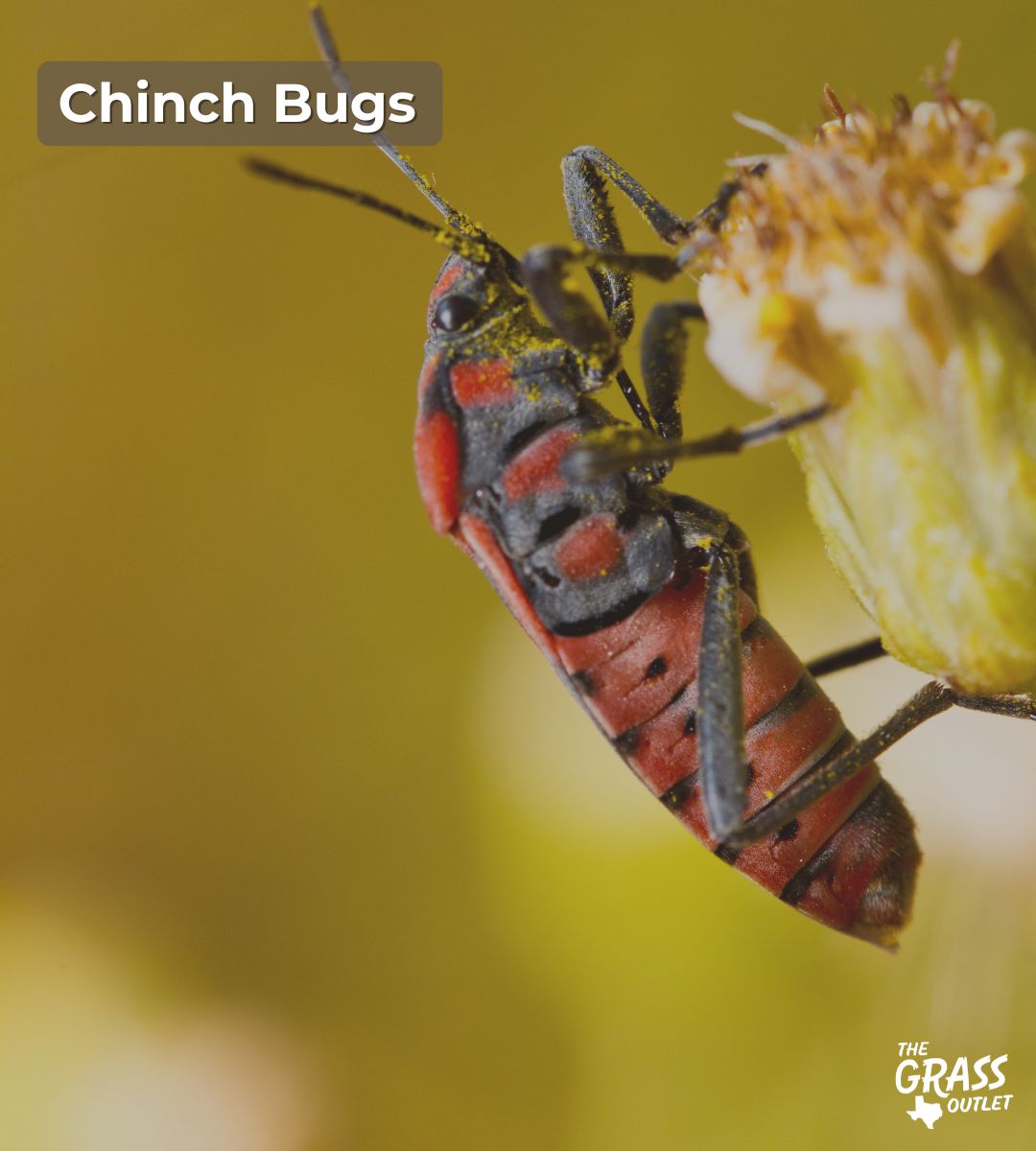
Chinch bugs appear during the summer when the weather is hot and dry, and that’s when they reproduce the most. They feed mainly on Zoysia, Bermuda or St. Augustine grass. A female can lay up to 500 eggs. After hatching, the larvae spread across the lawn, sucking the sap from the grass, resulting in yellow spots that later turn brown.
Where do chinch bugs mostly settle in the lawn?
They are often found in parts near paths, sidewalks, or close to thresholds, as these edges attract heat. How do you recognize them? As young, they are distinguished by a bright red to orange color with a white stripe on their abdomen. As adults, less than a quarter of an inch in length, they become black with a white area on their backs between the wings.
Grubs
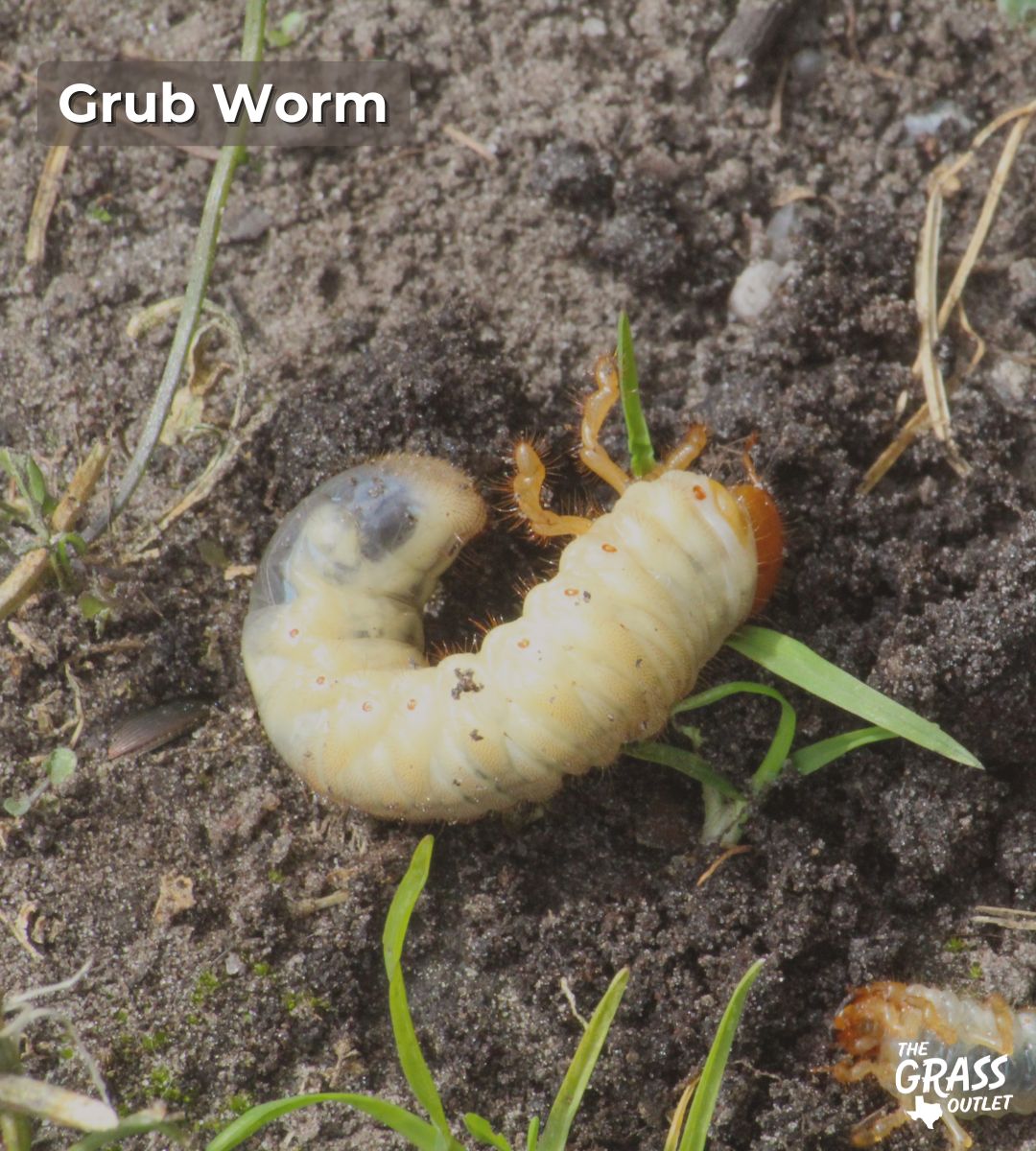
An invader that attacks Zoysia, Bermuda, St. Augustine grass, and Buffalo grass is the grub worm. You’ll easily recognize white grubs – they are C-shaped, white in color, with a wrinkled soft body and legs, and usually range from a quarter to one inch in length. Experts consider them the most undesirable pests, which are difficult to notice until significant lawn damage occurs. Their target is the tender grass root, which resides in the soil. The most widespread are the June and May beetle larvae and the Japanese Beetle. DoMyOwn’s short instructional video will guide you in checking your lawn for grub worms.
What are the development stages of grubs?
In the heart of summer, the female lays eggs in the ground, and after 15 days, larvae emerge from the eggs and feed, molt, and grow. When the temperature drops and the cold period starts, they bury themselves below the ground to protect themselves from freezing. In the spring, they come to the surface, feeding on the grassroots. Then comes their third stage of development, in the form of a pupa. The pupa then develops the adult beetle insect; on the surface, it looks for food and a partner, thus starting the cycle again. The life cycle of the Japanese beetle lasts one year, while the life of the June beetle lasts three years.
You will recognize damage to the lawn caused by grubs with brown spots, most often in August, and is often mistaken for drought. However, unlike damage caused by drought, the negative impact of grubs is recognized because the lawn easily separates from the soil. In addition, a clear sign is the presence of birds landing on the lawn.
Tropical Sod Webworms
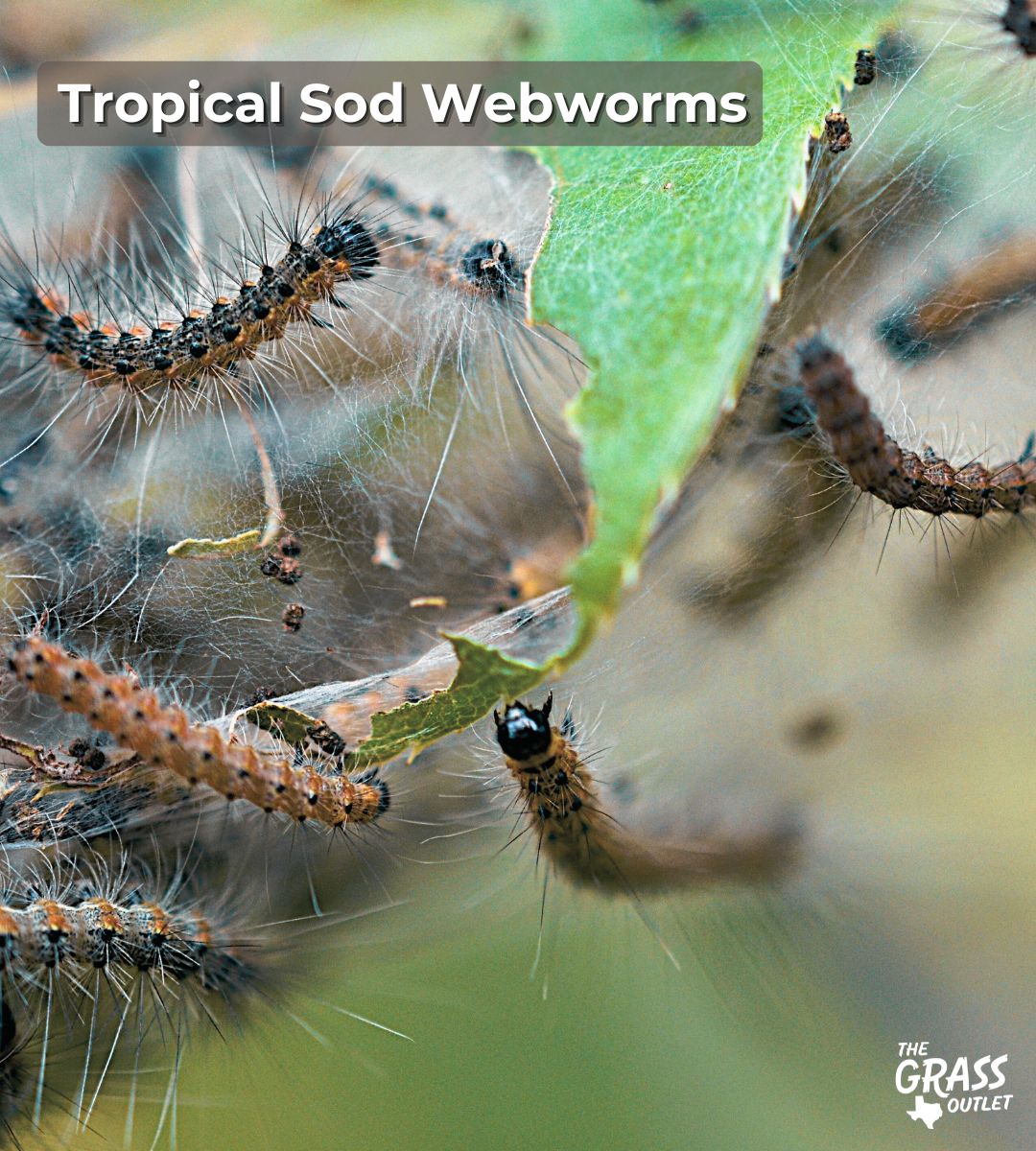
The larval stage of these pests is known for causing significant damage to maintained lawns in a very short time, just a few days. The height of the grass in areas infected by these pests is often significantly shorter than in unaffected parts. You can notice cuts on the leaves. This occurrence is most common during mid and late summer, especially in Dallas, Houston, and Austin.
These pests also have four stages of development – egg, larva, pupa, and adult beetle. In the larval stage, they are elongated and green in color, while the adult moths are brown with a wingspan of three-quarters of an inch. If the lawn’s grass is mowed to about one inch in height, the larvae’s webbing will be easily noticeable and quickly addressed. Otherwise, these larvae feed on grass during the night. These pests rarely cause complete loss of grass, and the damage is usually superficial and temporary. We have already written about handling sod webworms on our blog, so you can take a look at it.
Fall Armyworms

These pests are cylindrical and have a light brown to dark black color with characteristic light stripes along their bodies. They are 1.5 to 2 inches long. They appear at night or in lower temperatures.
They often leave behind damaged and nibbled leaves when feeding on the lawn. The damage to the lawn can be evident in the form of large bites on the leaves, which can lead to reduced photosynthesis and general weakening of the lawn. Their life cycle lasts about a month in the summer and about two months in the fall and spring.
Mole Crickets
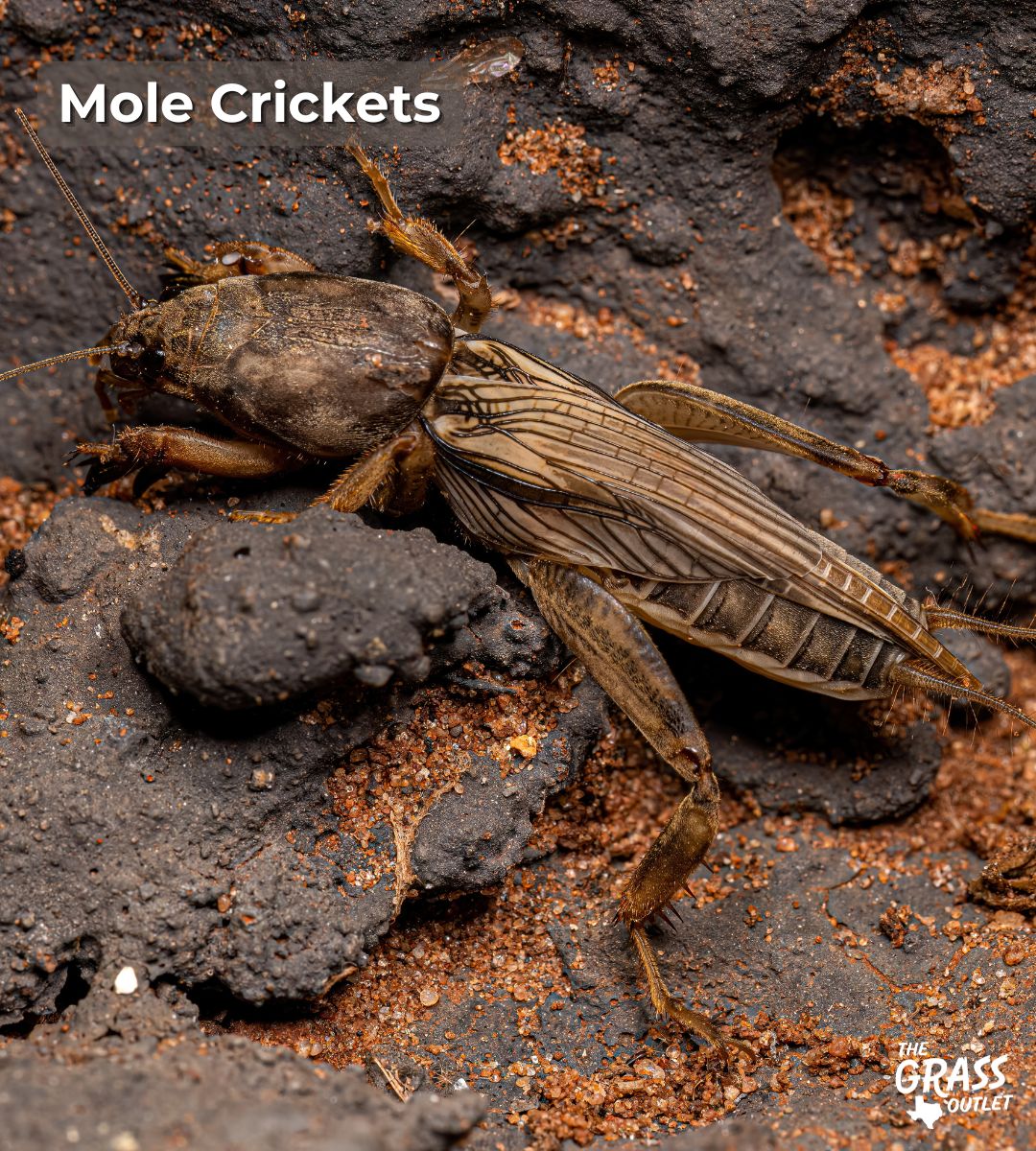
They have a distinctive appearance, resembling a cricket and lobster hybrid, due to their specific claws at the front. Adult specimens are just over one inch long, while larvae only have the same distinctive appearance in smaller dimensions. They live deep in the ground, in vertical holes, and take refuge there during the winter. In spring, as temperatures rise, they move towards the surface to feed on roots and grass. You will never see them during the day, as they prefer feeding underground or at night, but they can be attracted to artificial light at night.
When temperatures rise during spring, mole crickets will re-emerge towards the surface to feed on grass and roots. They damage the lawn by gnawing on roots and creating networks of tunnels underground. They are rarely visible during the day, preferring to feed underground or at night. Because of that, it is vital to control mole crickets and their infestation.
Greenbugs
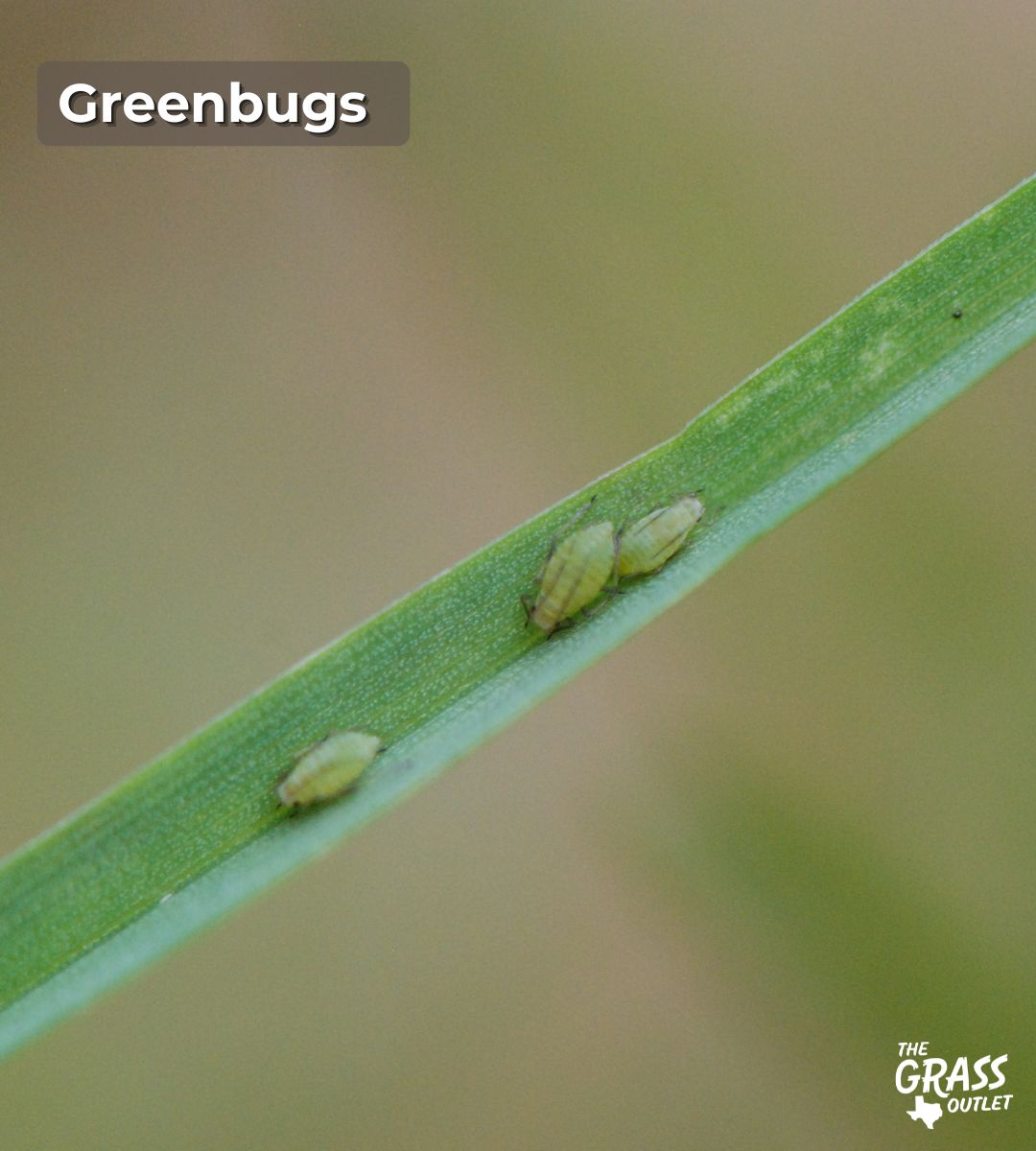
Their harmfulness is reflected in the fact that by sucking the juices from grass leaves, they inject toxins into the leaf, killing it. The leaves start to turn yellow, which is initially more challenging to notice, and then becomes more pronounced as they acquire an orange-brown color. There can usually be up to 30 of these green bugs on a grass leaf, with a darker green stripe running down the middle of their back, black tips on their legs, and two projections on the rear of the abdomen.
Cutworms
Cutworm larvae, several species, feed at night and hide underground during the day. They chew grass leaves and stems, often severing young plants at ground level. It can result in irregular patches of damaged or dead grass.
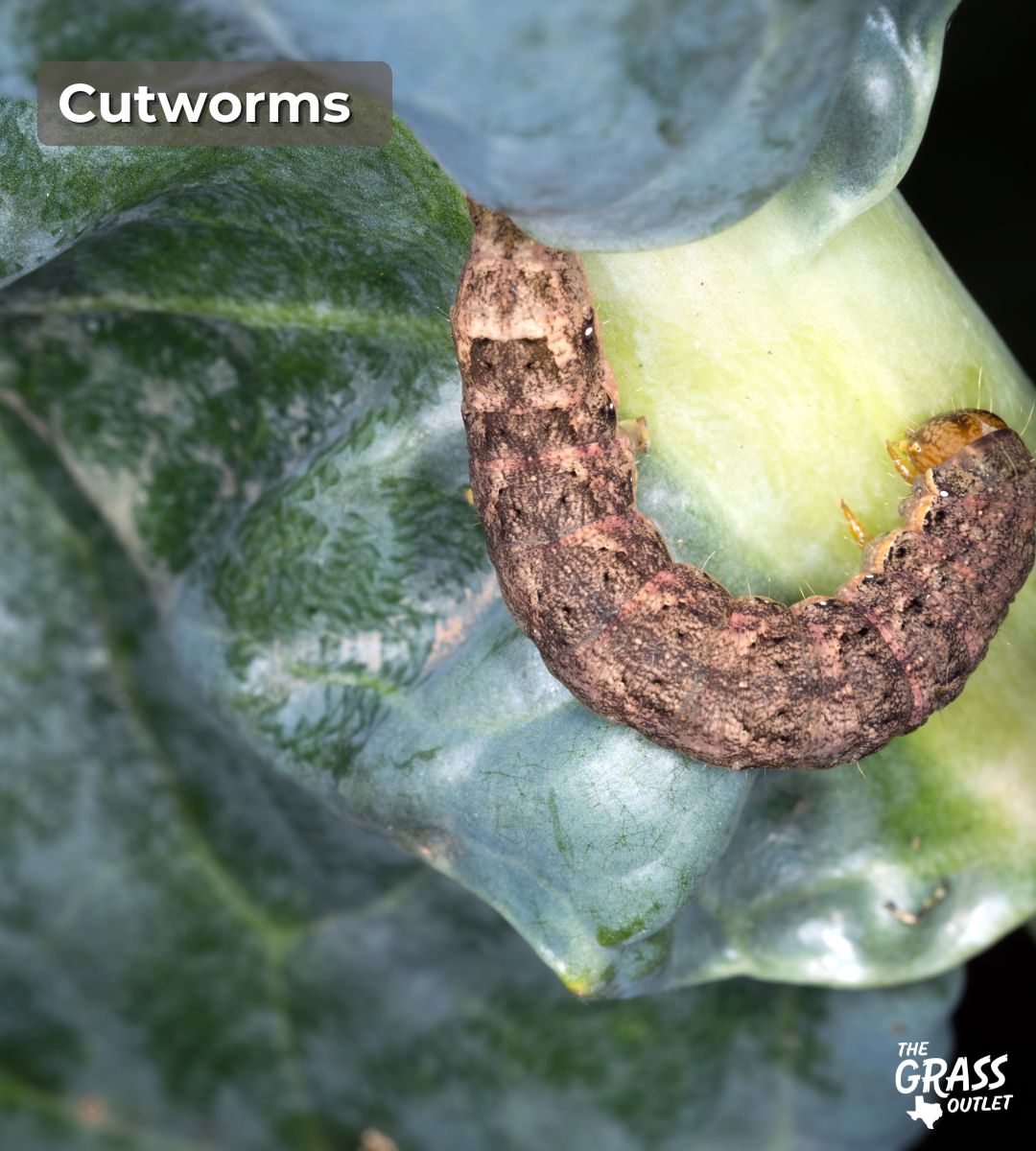
They are particularly harmful to newly seeded lawns, where they clip off seedlings at or just below the soil surface. Because of that, they can seriously hinder the establishment of new grass. The larvae are about 2 inches long, gray or brown, and have noticeable stripes on their body.
The life cycle starts with laying eggs on the grass leaves in the spring. The worms then hatch and feed at night. After three weeks, the worms turn into moths. This process occurs three to six times a year.
Billbugs
The grass turns brown when attacked by billbugs. The adult insects and their larvae damage the grass – adults create holes in the leaves and lay eggs there. Once the larvae hatch from the eggs, they eat the grass from the inside and continue eating from the root to the tip. The larva’s body is white, with a reddish-brown head. It is similar to a white grub, but unlike white grubs, these larvae do not have legs.
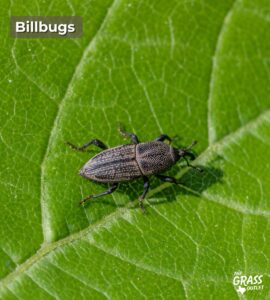
Pest Identification is the Path to Adequate Treatment
Pest identification involves a combination of observing symptoms on your lawn and recognizing specific pests. Early identification and quick response are crucial to minimize damage.
Here are some common signs and corresponding pests:
- Brown spots or dead grass: Root-feeding larvae, causing browning and dying of the grass
- Small, round bald patches: Presence of moles, creating tunnels and mounds on the lawn while searching for food
- Chewed grass leaves or cuts on the leaves: Caterpillars or armyworms.
- Yellowish or brown grass: Chinch bugs, which are small black-and-white insects, suck the sap from the grass, causing yellow and brown coloration
- Spongy lawn: If your lawn feels spongy underfoot, it could be due to a layer of moss hiding pests like grubs
- Visible insects: Sometimes you can see the pests themselves, such as ants, chinch bugs, or aphids
- Birds pecking at grass: Birds pecking at your lawn can be a sign they are feeding on larvae or other insects
- Tunnels or tracks: Voles create surface tunnels on the lawn, and these tracks can identify their presence
- Irregularly shaped dry patches: This could be due to cutworms severing grass at the soil line
- Wilted grass despite adequate watering: This could be a sign of root-feeding insects, like white grubs
Once you’ve identified the pest, you can proceed with control measures. Effective pest control largely depends on understanding the pest’s life cycle and timing control measures accordingly.
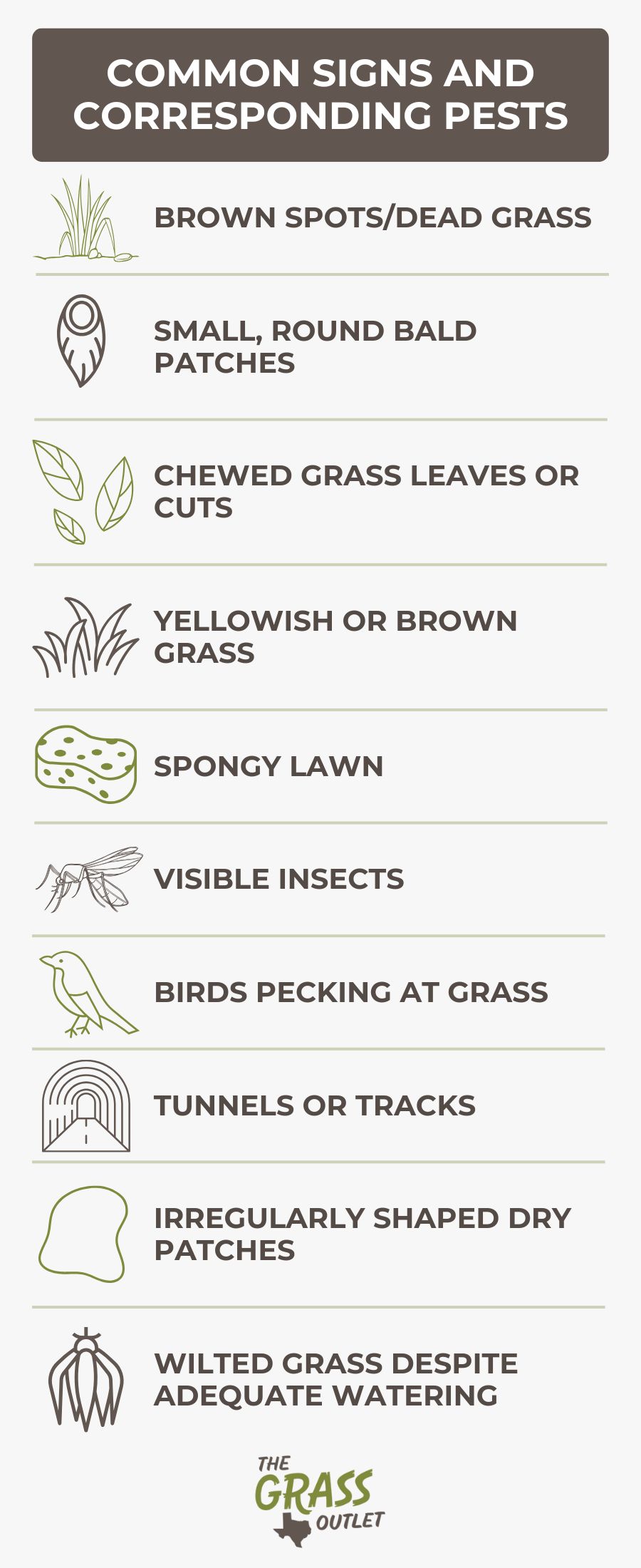
The specific timing and effectiveness of measures can vary depending on geographical location and the particular type of pest. It’s always a good idea to consult a local expert for advice tailored to your situation. The Grass Outlet team can help you in that field. Also, always follow the instructions on the label when using pesticides.
Pest Control Methods and Products
Chemical insecticides are commonly used to prevent lawn damage, but control measures can also be non-chemical. As many beneficial insects like bees inhabit lawns, it’s crucial to ensure that pest control does not harm the habitat of these beneficial insects and their roles.
Let’s look at the various pest control methods:
Chemical Insecticides
- Granular insecticides come in small, granulated particles. They are known for their slow-release formulas, which are suitable for preventive pest control and provide constant protection against potential infestations. Granular formulations are often more resistant to weather conditions like rain or wind than liquid sprays. This resistance helps maintain their effectiveness even in unfavorable weather conditions. Using granular insecticides is generally less risky compared to sprays or liquid formulations. There’s a lower risk of drift or inhalation. Liquid insecticides often provide faster results compared to granular formulations. They are quickly absorbed, leading to a rapid reduction in pest numbers.
- Liquid formulations offer better surface coverage and can penetrate deeply into foliage, soil, or moss, ensuring the insecticide reaches pests hidden in hard-to-reach places. Due to their rapid action and extensive coverage, liquid insecticides are particularly effective against large or severe pest infestations. When applying liquid insecticides, it’s essential to use proper protective equipment, such as gloves and masks, to avoid inhalation or direct skin contact. Some liquid insecticides require watering after application, while others adhere to the surface to which they are applied.
- The plant absorbs systemic insecticides through roots or foliage. Once absorbed, they move through the plant’s tissues – leaves, stems, flowers, and sometimes even fruits. Unlike contact insecticides that remain on the surface, systemic insecticides protect the plant from the inside. It makes them effective against pests that feed on the plant itself. Systemic insecticides target pests that consume plant material, ensuring that only pests feeding on treated plants are affected. This approach can be more environmentally friendly as it minimizes the impact on non-target organisms.
Biological Control Agents
- Nematodes are microscopic worm-like organisms used in biological pest control. They are effective against various soil-dwelling larvae and offer an environmentally friendly alternative to chemical pesticides. As natural parasites of pests, they do not harm plants, humans, pets, or beneficial insects like bees. Once inside a host larva, nematodes release symbiotic bacteria that kill the host within a few days. Nematodes then feed on the bacteria and decompose host tissue.
After consuming the host, nematodes reproduce, and their offspring seek new hosts, continuing the pest control cycle. The best time for application is late summer or early fall when larvae are most vulnerable.
- Parasitic Wasps are natural enemies of many pests, including caterpillars, aphids, and other soft-bodied insects. These wasps lay their eggs on or inside the bodies of caterpillars or other host insects. The wasp larvae then feed on the host, eventually killing it. This unique life cycle makes them effective biological control agents. To encourage the presence of parasitic wasps, it’s helpful to have a diverse garden with various plants that provide nectar and pollen for adult wasps to feed on.
Cultural Control Methods
- Lawn Aeration: This process involves creating small holes in the soil to allow air, water, and nutrients to penetrate the grass roots. It helps roots grow deeper and creates a stronger, more vigorous lawn. Aeration can reduce soil compaction, improve drainage, and make conditions less favorable for specific pests.
- Adequate Irrigation: Proper watering methods involve the right tools and understanding the specific water needs of plants, soil type, and local weather conditions. Overwatering can lead to root rot and fungal diseases, while under-watering can stress plants, making them more susceptible to pests. Consider drip systems, soaker hoses or sprinklers, and automatic timers.
Monitoring and Prevention
Identifying lawn pests involves observing the symptoms in your lawn and recognizing the specific pests.
To correctly identify the pest, you may also need to look for the insects themselves. You can do it by:
- Examining the turf: Pull back a section of turf and look for larvae, bugs, or other insects.
- Soil inspection: Dig into the top layer of soil to look for grubs or other soil-dwelling pests.
- Traps and baits: Use traps or baits to catch or attract insects for identification.
Once you’ve identified the pest, you can select the appropriate treatment method, including cultural, biological, or chemical controls.
Conclusion
Summing up everything written above, it’s clear that it’s necessary to dedicate time to learning about the various pests that can attack lawns and how to prevent them. However, with clear instructions and expert knowledge, once you delve into this topic, you will understand the entire process and be informed on how to keep your lawn healthy. Nature has its dynamics and laws, and although we cannot go against them, we can learn a lot from nature, especially how to live in harmony with it and offer our best.
Don’t be discouraged when pests arrive from nature because The Grass Outlet experts are here to advise you on prevention and control methods. We know the common goal – a healthy, green, lush lawn, a pride for the homeowner and the entire family.


